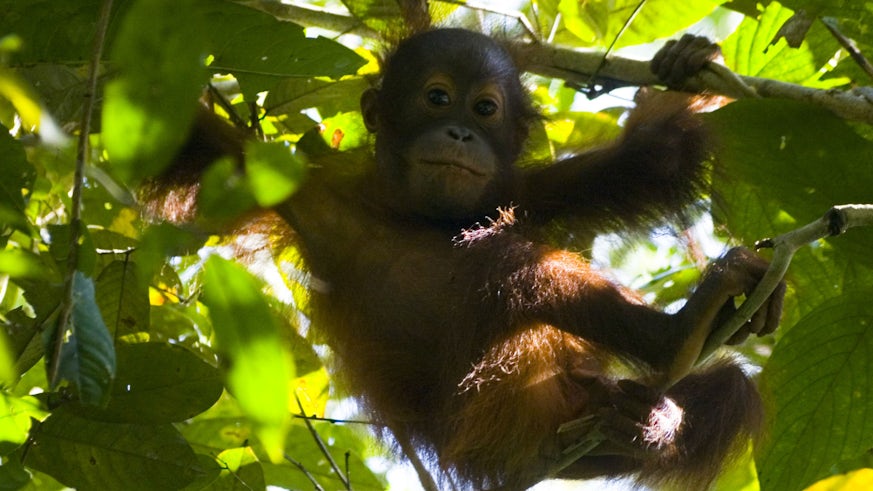Orangutans in Sabah have a better future
23 February 2018

100,000 orangutans have disappeared in Borneo in the last 16 years, finds a new study with contribution from the Danau Girang Field Centre.
Hunting and the destruction of habitat has led to this decline which has been faster than initially thought. However, efforts from the government in Sabah, where Danau Girang Field Centre, a research facility managed by Sabah Wildlife Department and Cardiff University, is based, are proving effective.
Dr Marc Ancrenaz, co-director of the NGO HUTAN based in Sabah, said: “This figure is staggering. The rate of decline is much faster that what we thought, and this is worrying. If we cannot stop this decline, many more populations are going to disappear in the next few decades.
“It means that there were more orangutans in the past than what we thought, and this illustrates how difficult it is to know exactly how many wild orangutans are surviving in Borneo.
“This also means that it is urgent to change our approach to conserve orangutans.”
The research praised the work of the Sabah State Government, which has established protected areas of forest for orangutans, but the study also highlighted the imperative need for further legislation to prevent further deaths.
Dr Benoit Goossens, director of the Danau Girang Field Centre and Reader at Cardiff University, said: “Most large populations in Sabah have been stable for the past 20 years in the State thanks to the creation of new fully protected forests by the State Government..."
Data from HUTAN and Sabah Wildlife Department showed that the fragmented population of orangutans living in Lower Kinabatangan was about 1,100 in the early 2000s. Today this population numbers less than 800 individuals.
“This decline is explained by habitat loss,” added Dr Marc Ancrenaz.
The researchers have suggested that, in order to prevent further decline of the endangered species, agricultural activities need to become mindful of the movements of orangutans throughout the state.
Dr Benoit Goossens said: “We need to create forest corridors that will allow the orangutans to move across the landscape and to find new lands to establish their own territories.
“Here the efforts of the government to protect 30 percent of the forest need to be applauded - this will be a game saver for the largest populations.
“We also need to ensure that no orangutan is killed and ensure that if this happens, the poachers are brought to justice.
“Even if the larger orangutan populations seem to be somehow secure, there is still a real risk that smaller groups of animals that are unaccounted for today may disappear in the next few years. The clock is ticking.
“We have been working in Sabah for more than 20 years and we sincerely believe that the major orangutan populations in Sabah are secure thanks to the commitment from Sabah government to protect 30 percent of their land mass.
“Hunting is not a big issue here, compared to other parts of the island, so there is definitely hope for wildlife in the State. Sabah might be in the future the last place where it is possible to find wild orangutans.”





